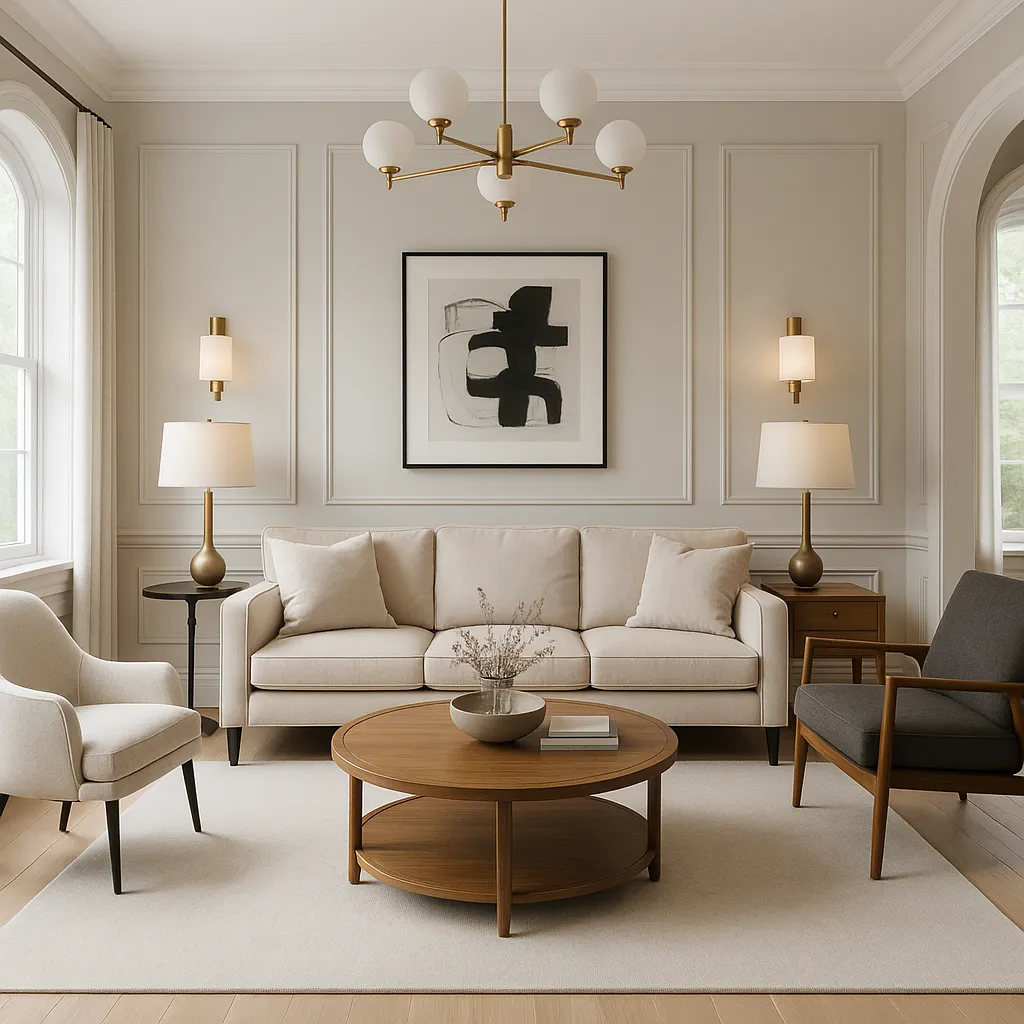Visual balance is what makes a room feel harmonious, comfortable, and aesthetically pleasing. It’s the difference between a space that feels thoughtfully designed and one that feels “off,” even if you can’t quite explain why. Whether you’re decorating a living room, bedroom, or open-plan space, balance ensures that your furniture, color, texture, and layout work together in a way that’s visually satisfying. In this guide, you’ll learn how to create visual balance in your home decor—like a designer.
Understand the Principles of Balance
There are several types of visual balance you can use, depending on your style and the function of the room.
Types of Balance:
- Symmetrical Balance: Mirrored design on either side of a central point. Classic and calming.
- Asymmetrical Balance: Visual weight is distributed without perfect mirroring. More dynamic and modern.
- Radial Balance: Elements radiate from a central point, like a round dining table or chandelier.
- Crystallographic Balance: Repetition of elements across a space (common in patterned rugs or gallery walls).
Each style creates a different mood. Use what fits the function and feeling you want for the space.
Start with a Focal Point
Every balanced room needs a focal point—something that draws attention and helps organize the layout around it.
Focal Point Ideas:
- A fireplace or media console
- A bed with a large headboard
- A bold art piece or gallery wall
- A window with a scenic view
Place your largest furniture or key accessories around this point to establish flow and structure.
Distribute Visual Weight Evenly
Visual weight refers to how much attention an object commands. Large, dark, textured, or bold-colored items carry more visual weight.
Balance Tips:
- Don’t place all heavy or dark furniture on one side of the room.
- Balance a large sofa with multiple lighter chairs or a bold rug.
- Offset a tall cabinet with artwork or shelving on the opposite side.
Step back and observe: does one side feel too “heavy”? If so, redistribute to even it out.
Use Symmetry Where It Makes Sense
Symmetry brings calm and order. It’s ideal in formal spaces or for creating a peaceful atmosphere.
Where to Use Symmetry:
- Bedrooms: matching nightstands and lamps
- Entryways: twin vases or sconces
- Living rooms: sofas flanked by identical chairs or side tables
Too much symmetry can feel rigid, so blend in asymmetry to keep things interesting.
Embrace Asymmetry for Movement
Asymmetrical design creates a relaxed and more modern feel. It can make rooms feel spontaneous and lived-in, while still stylish.
Asymmetrical Techniques:
- Group different-sized frames on a gallery wall.
- Pair a bold chair with a subtle side table and tall floor lamp.
- Mix different textures, like soft throws and sleek metals.
The key is balance, not sameness.
Use Color to Create Balance
Color has visual weight—bold colors feel heavier than muted tones. Use this to your advantage when arranging furniture and accessories.
Color Balancing Tips:
- Offset a colorful sofa with light-toned walls or a neutral rug.
- Distribute color around the room—don’t keep it all in one corner.
- Use pops of accent color in small doses throughout the space.
Color placement keeps the room feeling anchored and vibrant, without chaos.
Layer Textures and Shapes
Mixing textures and shapes adds dimension, but they should be spread evenly to maintain harmony.
Texture and Shape Ideas:
- Combine soft (fabric) with hard (metal/wood) materials.
- Mix organic shapes (rounded tables, soft throws) with structured lines (square cushions, rectangular shelves).
- Use rough textures (wicker, stone) alongside smooth ones (glass, ceramic).
Too much of the same texture can make a space feel flat—balance keeps it dynamic.
Balance Vertical and Horizontal Elements
A room needs visual balance both side-to-side and top-to-bottom.
Vertical-Horizontal Balance Tips:
- Pair a tall bookcase with a horizontal console or low seating.
- Use vertical mirrors or art to elongate shorter walls.
- Ground high ceilings with rugs, low furniture, or long drapery.
Maintaining this balance prevents spaces from feeling either too boxy or too stretched.
Think in Visual Triangles
Interior designers often arrange decor in triangles—it’s a natural way for the eye to take in a scene.
Triangle Placement Tips:
- On a shelf: group a tall vase, a medium candle, and a small book stack.
- On a coffee table: mix different heights to create a visual triangle.
- On a wall: hang art in a triangular arrangement for movement.
This trick keeps groupings visually satisfying and easy to style.
Final Thoughts: Balance Brings Beauty
Creating visual balance doesn’t mean making everything match—it means creating a rhythm and flow that feels natural. By being intentional with scale, color, layout, and texture, you can design a space that looks beautiful and feels just right.
When your room is balanced, it doesn’t just look better—it feels better to live in. Whether you lean toward symmetry, embrace contrast, or blend both, balance is the foundation of any well-designed space.
